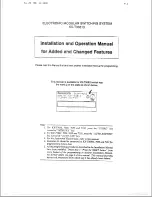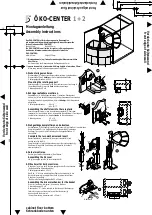
3
Product description
3.1
Product characteristics
Measurement principle
The device is an opto-electronic LiDAR sensor that uses laser beams for non-contact
scanning of the outline of its surroundings on a plane. The device measures its sur‐
roundings in two-dimensional polar coordinates, relative to its measurement origin. Its
measurement origin is marked by a circular indentation in the center of the optics
cover. If a laser beam strikes an object, the position of that object is determined in
terms of distance and direction.
Figure 1: The 2D LiDAR sensor measurement principle
Range finding
The device emits beams pulsed by a laser diode. If a laser pulse hits an object or per‐
son, it is reflected on the surface of the object or person in question. The reflection is
registered by a photosensitive element in the device receiver. The device uses SICK’s
own HDDM+ (High Definition Distance Measurement plus) technology. With this mea‐
surement process, a measured value is formed by evaluating multiple single pulses.
The device calculates the distance from the object based on the elapsed time that the
light requires between emitting the beam and receiving the reflection. Radar systems
apply this “pulse time-of-flight measurement” principle in a similar way.
Direction measurement
The device uses a rotating mirror to deflect the emitted laser beams, thereby scanning
its surroundings in a circular pattern. The measurements are triggered internally by an
encoder in regular angle increments. The device has a scanning frequency of 14.5 Hz.
The measuring procedure uses a histogram of multiple pulses to determine individual
measured values.
3
PRODUCT DESCRIPTION
10
O P E R A T I N G I N S T R U C T I O N S | TiM2xx
8025019/190A/2020-08 | SICK
Subject to change without notice











































